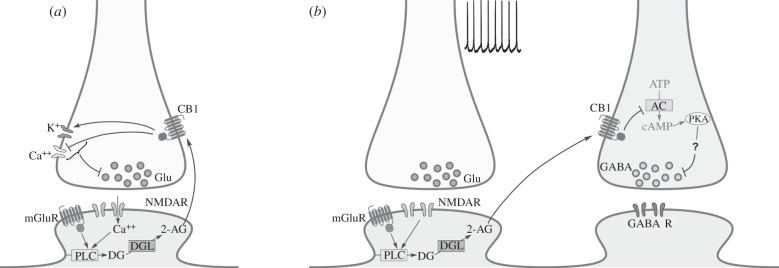Figure 1.
eCB-dependent short-term depression (STD) and long-term depression (LTD). (a) eCB-mediated STD. Activation of Gq/11-coupled metabotropic receptors (mGluR) and/or Ca++-permeable ionotropic receptors (NMDAR) on the postsynaptic cell promotes the hydrolysis of membrane phospholipids into diacylglycerol (DG) by phospholipase C (PLC). Conversion of DG into 2-AG is then performed by the enzyme DGL. 2-AG binds to the presynaptic Gi/o-coupled CB1 receptor, causing decreased Ca++ conductance and increased K+ conductance. This modulation of calcium results in a decreased probability of transmitter release from the presynaptic terminal. (b) eCB-mediated LTD. Activity-dependent release of glutamate results in mGluR and NMDA receptor activation. This promotes the synthesis of 2-AG, which then travels to the presynaptic domain, where it activates the CB1 receptor on neighbouring GABAergic terminals. The resulting inhibition of adenylyl cyclase (AC) promotes a decrease in PKA activation. Decreased PKA activity is believed to reduce phosphorylation of a presynaptic regulatory messenger, resulting in a lasting reduction of neurotransmitter release.

